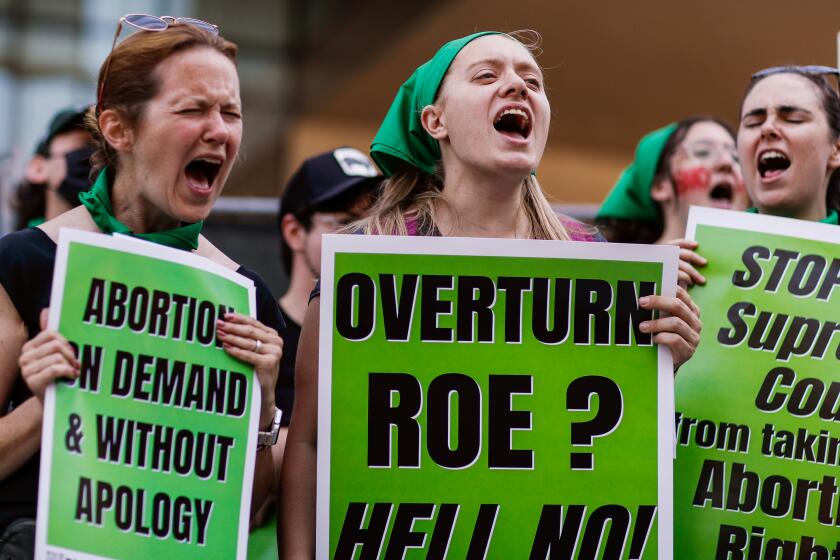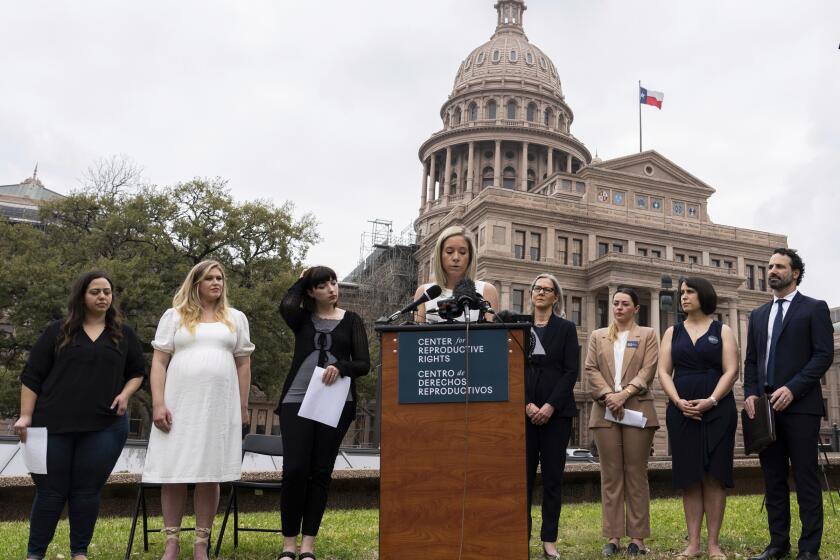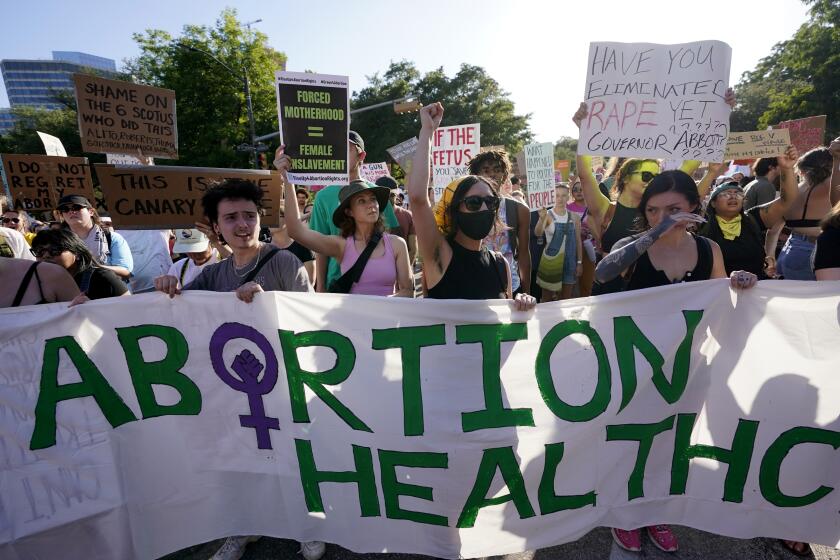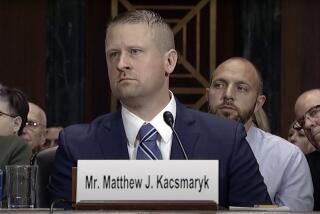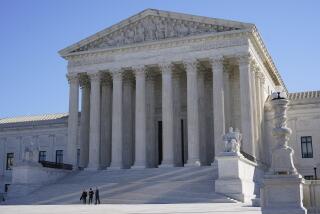Opinion: If you were relieved by the Supreme Court’s abortion rulings this term, think again
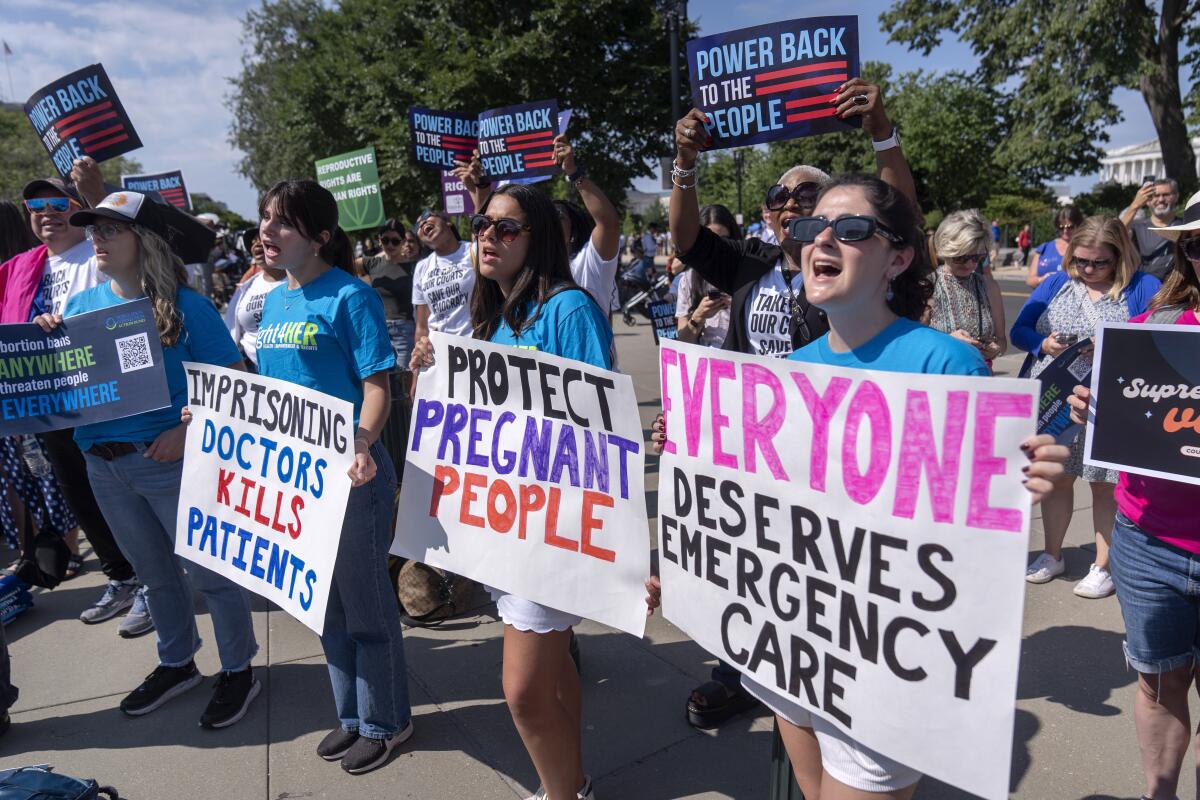
- Share via
Emergency access to abortion has been a flashpoint in the chaotic aftermath of the Supreme Court’s overturning of the right to terminate a pregnancy in Dobbs vs. Jackson Women’s Health Organization in 2022.
Can states deny women the care they need to preserve their health in the aftermath of Dobbs, or does federal law provide some protection for patients?
In January, the Supreme Court agreed to hear two cases testing whether the federal Emergency Medical Treatment and Labor Act — or EMTALA — could override Idaho’s strict state abortion ban. Idaho has some of the narrowest exceptions to its ban in the nation — allowing doctors to intervene only when there was a threat to the life, not health, of the patient. The Biden administration argued that the federal law provided broader protection — and trumped the state’s ban. But on Thursday, the justices decided they had taken up the issue too soon, dismissing the cases as “improvidently granted” and sending them back to the U.S. 9th Circuit Court of Appeals.
If Donald Trump is reelected, antiabortion forces may not need to win in court to outlaw medication abortion nationwide.
In practical terms, Thursday’s ruling means that a district court order in Idaho that agreed with the administration about EMTALA went back into effect: Emergency access to abortion will be protected in the state, at least for the time being.
It may seem at first that abortion supporters should be happy. The Supreme Court’s conservative supermajority agreed to hear two major abortion cases in a single term. And yet with Thursday’s ruling, and the court’s earlier decision that maintained wide access to mifepristone, a drug used in more than half of abortions nationwide, things didn’t get worse for reproductive rights.
The truth is that the court’s Idaho ruling is its own kind of disaster. It will increase the confusion and chaos women face when they need an emergency termination in states that ban all or most abortions. And the decision contains important clues about what could happen when or if the justices get another chance at these issues. The bottom line is simple: Don’t expect the Supreme Court to come to the rescue of women who find themselves in dire need of an abortion.
UC Davis law professor and historian Mary Ziegler has become one of the country’s leading authorities on the abortion issue. She sees a push-pull between judges, anti-abortion lawmakers and Americans who by and large favor abortion rights.
In theory, every state that severely limits or bans abortion has some kind of exception for threats to the life or health of the patient, but many of those exceptions are narrowly drawn and hard to understand. In addition, states impose unprecedented penalties on physicians who perform abortions that don’t fall under an exception — including, in some cases, life in prison. For these reasons, physicians have been reluctant to intervene, even when a patient may qualify under an exception.
States have scrambled to offer clarity, with some legislatures or medical boards adding explicit examples of when certain abortions may be performed, but these moves have only amplified the confusion. If an emergency condition doesn’t appear on a state’s list, does that automatically mean that a physician can’t act? Are there state or federal constitutional limits on denying access to patients who may die or suffer severe and permanent health damage? And what role, if any, does EMTALA play? The Supreme Court’s ruling ensures that none of these questions will be fully answered in the short term, and patients will be the ones to pay the price.
Trump and Biden went after each other’s stance on abortion at Thursday night’s debate. But where does each candidate stand?
The “improvidently granted” ruling split the court into three three-justice factions, with a center-right bloc agreeing with the liberals to dismiss the case, and the most conservative justices, led by Samuel A. Alito Jr., prepared to hold that EMTALA does absolutely nothing to limit strict abortion bans.
Justice Amy Coney Barrett, joined by Brett M. Kavanaugh and Chief Justice John G. Roberts Jr., agreed that it was too early for the court to intervene, but they didn’t seem averse to accepting Idaho’s arguments against EMTALA. Even if the center-right justices could find some rationale for providing patients with protection under EMTALA, they suggested a Faustian bargain: The court would interpret EMTALA to apply only to physical, not mental, health — and would conclude that the law does nothing to stop doctors with conscience-based objections from turning patients away, even when they face life-threatening emergencies.
New abortion restrictions after Roe vs. Wade was overturned, such as an Arizona legal ruling that effectively bans abortions there, are affecting women who miscarry.
The opinion Barrett penned clearly reflects suspicions about patients who invoke mental health as a justification for terminating a pregnancy, a long-standing talking point for those who consider psychological struggles during pregnancy to be a mere excuse for “abortion on demand.”
As for conscience-based denials of care, we can guess what Barrett has in mind because Kavanaugh’s majority opinion in the mifepristone case already spelled it out: Instead of the law having to balance doctors’ conscience-based objections with patients’ safety, the objecting doctors would be able to just say no, even in healthcare deserts where other providers may be unavailable.
The most concerning signal about what could be in store for those who get pregnant came in Alito’s dissent in the decision to send the Idaho case back to the lower court. Joined by Justices Neil M. Gorsuch and Clarence Thomas, he suggested that EMTALA, rather than protecting a pregnant patient with a life-threatening emergency, protects the unborn patient instead.
A decision by the Arizona Supreme Court that aims to impose a near-total abortion ban in the state has put Southern California providers on alert.
Antiabortion groups have long argued that the 14th Amendment of the Constitution guarantees constitutional fetal rights. Alito did not explicitly take up that question, but his reading of the statute aligns with so-called fetal personhood views. He reasoned that because the wording in EMTALA includes the term “unborn child,” its framers must have prioritized the fetus over the mother, even when the mother’s life or health is in jeopardy.
As EMTALA litigation moves back into the federal courts, the 2024 election could make the whole thing moot. A second Trump administration would almost certainly withdraw President Biden’s guidance on EMTALA and let the states make their own decisions about when to withhold emergency care from patients. That is precisely what conservatives, led by the Heritage Foundation, have recommended in Project 2025, a proposed blueprint for another Trump presidency.
Abortion rights advocates may have been relieved on Thursday that the conservative majority on the Supreme Court punted on the Idaho abortion cases, but any celebration will be short-lived. In reality, there is no relief in sight for pregnant patients facing the dangers of a post-Roe America.
Mary Ziegler is a law professor at UC Davis and the author of “Roe: The History of a National Obsession.”
More to Read
A cure for the common opinion
Get thought-provoking perspectives with our weekly newsletter.
You may occasionally receive promotional content from the Los Angeles Times.


